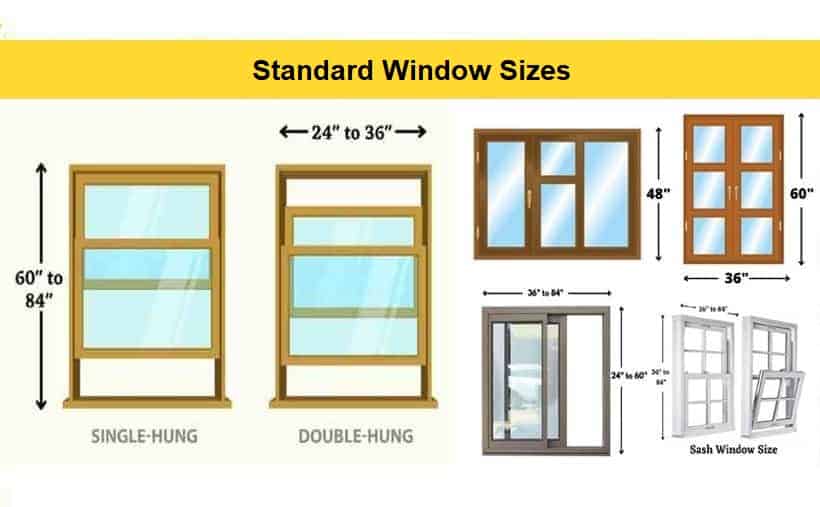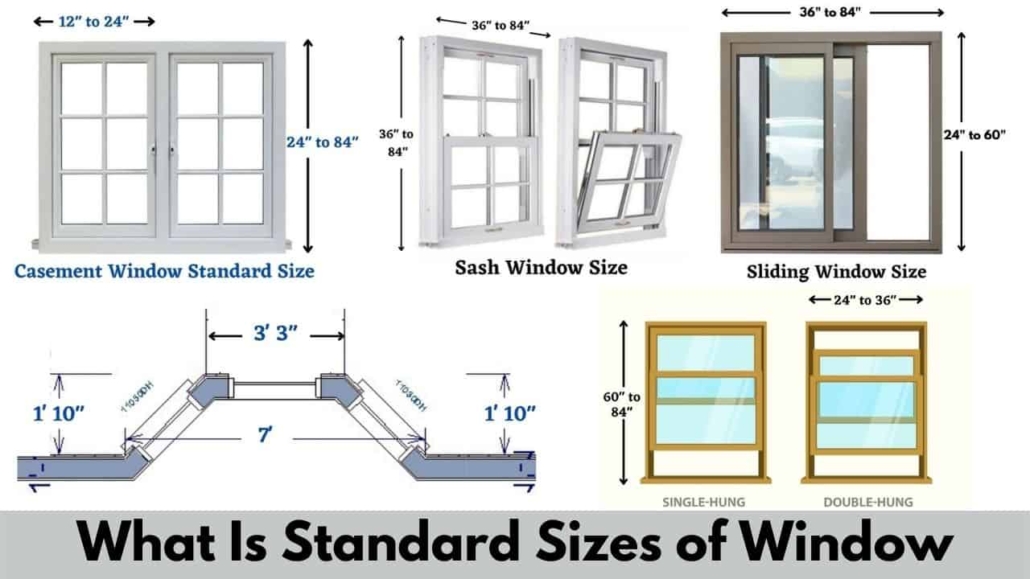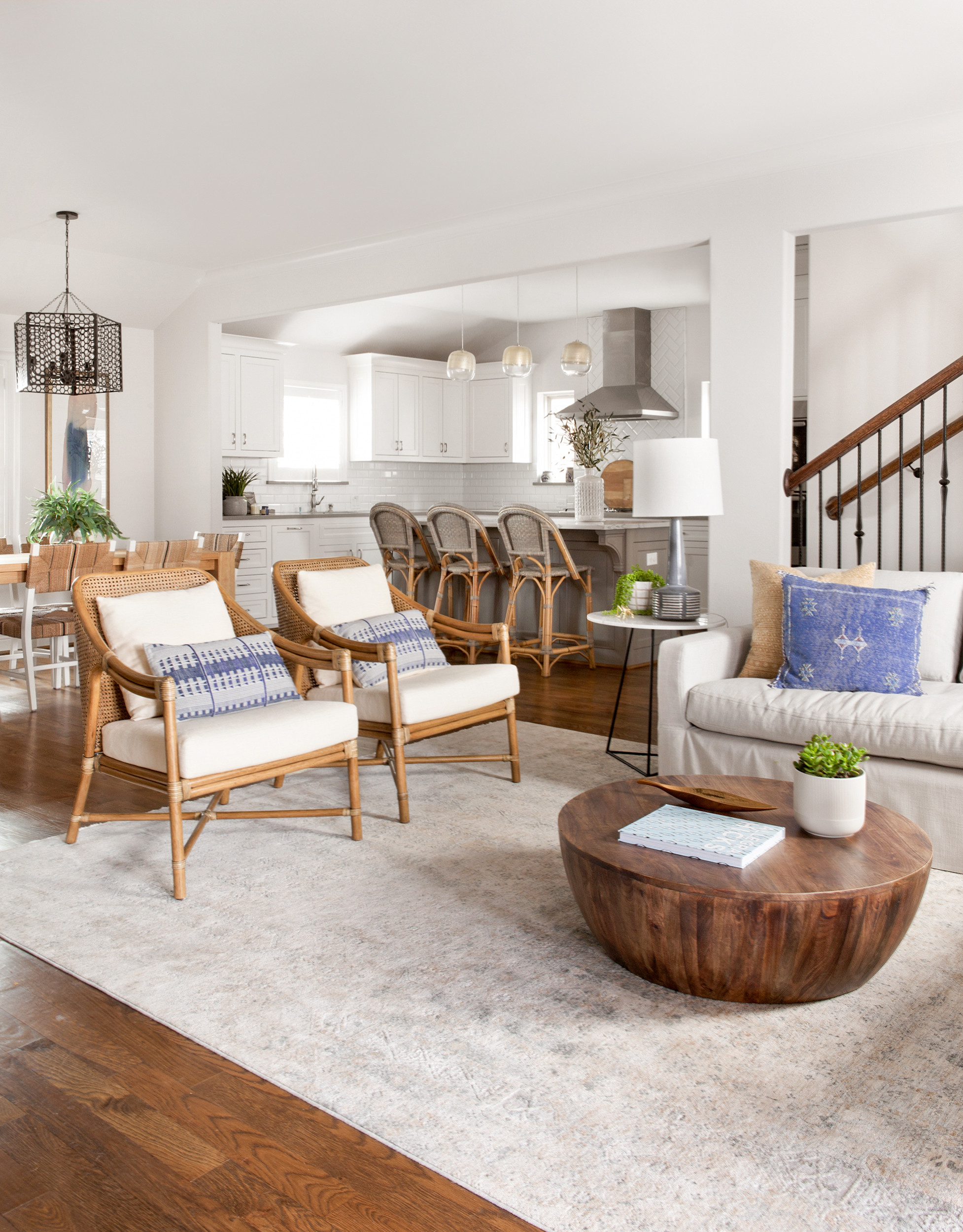When it comes to choosing the right window size for your living room, it's important to consider both style and functionality. Standard window sizes for living rooms typically range from 24-48 inches in height and 36-72 inches in width. These dimensions allow for enough natural light to enter the room while still maintaining a balance with the furniture and decor. For larger living rooms, you may want to consider using multiple standard-sized windows to create a more open and airy feel. This also allows for more flexibility in terms of furniture placement and design options. Standard Window Sizes for Living Rooms
The average window dimensions for living rooms can vary depending on the size and layout of the room. However, most living room windows fall within the range of 36-48 inches in height and 60-72 inches in width. These dimensions tend to provide a good balance between natural light and privacy. If you have a smaller living room, you may want to consider using taller windows to create the illusion of a larger space. On the other hand, for larger living rooms, you may want to opt for wider windows to allow for more natural light to enter the room. Average Window Dimensions for Living Rooms
The ideal window size for a living room is ultimately determined by personal preference and the design of the room. However, a popular and practical option is a large picture window. These windows are typically 48-72 inches in height and 72-96 inches in width, providing an unobstructed view and ample natural light. Another ideal window size for living rooms is a bay window, which is a combination of three windows that project out from the room. These windows are typically 48-60 inches in height and 90-120 inches in width, creating a cozy and unique seating area within the room. Ideal Window Size for Living Rooms
Some of the most common window sizes for living rooms include 36x60 inches, 48x60 inches, 60x60 inches, and 72x60 inches. These sizes are popular because they provide a good balance between natural light, privacy, and design options. For those who prefer a more modern look, floor-to-ceiling windows have become increasingly popular in living rooms. These windows are typically 96-120 inches in height and can range from 60-120 inches in width, providing a dramatic and open feel to the room. Common Window Sizes for Living Rooms
While there is no one-size-fits-all recommendation for window size in living rooms, a good rule of thumb is to aim for a window that is at least one-fifth the size of the room. For example, if your living room is 200 square feet, a window that is at least 40 square feet would be ideal. Additionally, considering the location of the window is also important. For example, if your living room is facing a beautiful view, it may be worth investing in larger windows to fully appreciate the scenery. Recommended Window Size for Living Rooms
Typical window dimensions for living rooms are often determined by the style of the home and the preferences of the homeowner. Some typical dimensions include 36x60 inches, 60x60 inches, and 72x60 inches. If you have a smaller living room, you may want to consider using taller and narrower windows to create the illusion of a larger space. Alternatively, for larger living rooms, you may want to opt for wider windows to allow for more natural light to enter the room. Typical Window Dimensions for Living Rooms
The optimal window size for a living room will depend on a variety of factors, such as the size of the room, the amount of natural light available, and personal preference. However, a popular and practical option is to have a combination of standard-sized windows and larger picture or bay windows. This allows for a balance between natural light, privacy, and design options. It also allows for the incorporation of different window treatments, such as curtains or blinds, to add an extra touch of style to the room. Optimal Window Size for Living Rooms
On average, living room windows tend to be around 36-72 inches in width and 24-48 inches in height. However, these measurements can vary depending on the specific needs and preferences of the homeowner. Some homeowners may prefer larger windows to create a more open and airy feel, while others may opt for smaller windows to maintain a certain level of privacy. It's important to consider the overall design of the room and how the windows will fit into it. Average Living Room Window Measurements
The standard living room window dimensions typically fall within the range of 24-48 inches in height and 36-72 inches in width. However, these dimensions can vary depending on the style and layout of the home. For a more traditional look, standard-sized windows are often used to maintain symmetry and balance in the room. In contemporary homes, larger and more unique window sizes are becoming increasingly popular to create a statement piece within the living room. Standard Living Room Window Dimensions
While there is no one-size-fits-all answer to the average window size for a typical living room, it is important to consider the overall size and layout of the room. A good rule of thumb is to aim for a window that is at least one-fifth the size of the room. Ultimately, the average window size for a typical living room will vary depending on personal preference, style, and functionality. It's important to choose a window size that fits your individual needs and enhances the overall design of your living room. Average Window Size for a Typical Living Room
The Importance of Choosing the Right Window Size for Your Living Room

Why Window Size Matters
 When designing or renovating a house, the window size may not be the first thing that comes to mind. However, it is a crucial aspect of house design that should not be overlooked, especially when it comes to the living room. The living room is where we spend most of our time, whether it's watching TV, hosting guests, or simply relaxing. Therefore, it is important to carefully consider the
window size
in order to create a welcoming and comfortable living space.
When designing or renovating a house, the window size may not be the first thing that comes to mind. However, it is a crucial aspect of house design that should not be overlooked, especially when it comes to the living room. The living room is where we spend most of our time, whether it's watching TV, hosting guests, or simply relaxing. Therefore, it is important to carefully consider the
window size
in order to create a welcoming and comfortable living space.
Creating the Illusion of Space
/What-are-standard-window-sizes-5195074-V1-1156aee102ac4a7d8aeac631454c41dc.png) One of the main reasons why
window size
is important in the living room is because it can create the illusion of space. Larger windows can make a room feel more open and airy, allowing natural light to flood in and make the room appear bigger than it actually is. This is especially beneficial for smaller living rooms, as it can make them feel more spacious and less claustrophobic.
On the other hand, smaller windows may give the illusion of a smaller living room, making it feel cramped and closed off. This can be a problem, especially for those who love to entertain and have guests over. Having larger windows can also provide a better view of the outside, bringing in natural beauty and adding to the overall aesthetic of the room.
One of the main reasons why
window size
is important in the living room is because it can create the illusion of space. Larger windows can make a room feel more open and airy, allowing natural light to flood in and make the room appear bigger than it actually is. This is especially beneficial for smaller living rooms, as it can make them feel more spacious and less claustrophobic.
On the other hand, smaller windows may give the illusion of a smaller living room, making it feel cramped and closed off. This can be a problem, especially for those who love to entertain and have guests over. Having larger windows can also provide a better view of the outside, bringing in natural beauty and adding to the overall aesthetic of the room.
Maximizing Natural Light
 Natural light is an important element in any living room. It not only brightens up the room, but it also has many health benefits such as boosting mood and increasing productivity.
Window size
plays a crucial role in maximizing the amount of natural light that enters the living room. Larger windows allow more sunlight to enter, providing a warm and inviting atmosphere. This can also help save on electricity costs as there is less need for artificial lighting during the day.
Natural light is an important element in any living room. It not only brightens up the room, but it also has many health benefits such as boosting mood and increasing productivity.
Window size
plays a crucial role in maximizing the amount of natural light that enters the living room. Larger windows allow more sunlight to enter, providing a warm and inviting atmosphere. This can also help save on electricity costs as there is less need for artificial lighting during the day.
Privacy and Energy Efficiency
 Aside from aesthetics and natural light,
window size
also affects privacy and energy efficiency. Smaller windows may offer more privacy, but they can also limit the amount of natural light and ventilation. On the other hand, larger windows may let in too much light and heat, making it difficult to control the temperature inside the room.
Therefore, it is important to find a balance between window size and functionality. This can be achieved by choosing the right type of window and utilizing techniques such as tinting or installing blinds or curtains.
Aside from aesthetics and natural light,
window size
also affects privacy and energy efficiency. Smaller windows may offer more privacy, but they can also limit the amount of natural light and ventilation. On the other hand, larger windows may let in too much light and heat, making it difficult to control the temperature inside the room.
Therefore, it is important to find a balance between window size and functionality. This can be achieved by choosing the right type of window and utilizing techniques such as tinting or installing blinds or curtains.
Conclusion
 In conclusion, when it comes to designing the living room,
window size
should not be overlooked. It is a crucial aspect that can greatly impact the overall look and feel of the room. By carefully considering the size and functionality of the windows, you can create a comfortable, inviting, and aesthetically pleasing living space for you and your family to enjoy. So, the next time you are designing or renovating your living room, be sure to give the window size the attention it deserves.
In conclusion, when it comes to designing the living room,
window size
should not be overlooked. It is a crucial aspect that can greatly impact the overall look and feel of the room. By carefully considering the size and functionality of the windows, you can create a comfortable, inviting, and aesthetically pleasing living space for you and your family to enjoy. So, the next time you are designing or renovating your living room, be sure to give the window size the attention it deserves.













































































